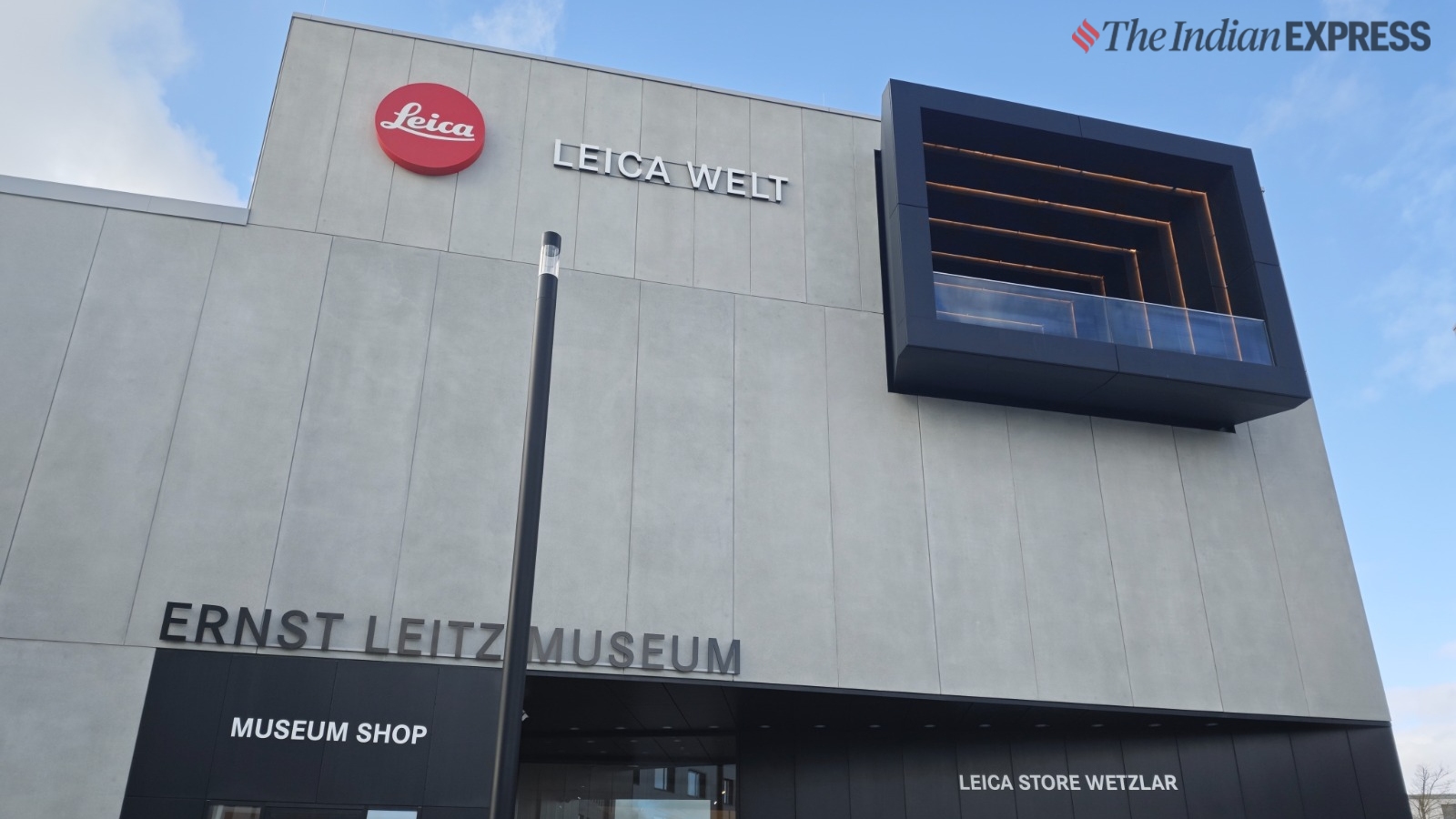“We don’t want to see Leica quality in €100 or €200 smartphones. It’s not possible because then we cannot have the best lens or the best imaging,” explains Kay Plaetke, Strategy & Business Development Manager Mobile at Leica, emphasising why the iconic German camera brand won’t settle for lower quality hardware and compromise on image quality.
For Leica, which collaborates closely with Xiaomi to fine-tune the cameras on the latter’s high-end smartphones, such as the Xiaomi 14, which debuted recently at the Mobile World Congress in Barcelona, the goal has always been to recreate the signature Leica look through a phone camera.
 Kay Plaetke, Strategy & Business Development Manager Mobile, Leica (right) and Julian Burczyk, Head of Product Management Mobile, Leica (left) during a media interaction with Indian press at the Leica headquarters in Wetzlar, Germany (Image credit: Anuj Bhatia/The Indian Express)
Kay Plaetke, Strategy & Business Development Manager Mobile, Leica (right) and Julian Burczyk, Head of Product Management Mobile, Leica (left) during a media interaction with Indian press at the Leica headquarters in Wetzlar, Germany (Image credit: Anuj Bhatia/The Indian Express)
“We always start with how we can bring our quality into a smaller and more compact form factor like smartphones,” Plaetke tells indianexpress.com in an interview at the company’s headquarters in Wetzlar, Germany. “We are limited by physics, but we are working on larger sensors, like a one-inch sensor.”
The new 14 series smartphones feature different imaging systems jointly developed by Xiaomi and Leica, including a top-end model with a large one-inch-type sensor variable aperture between f/1.63 to f/4.0. But, as Plaetke pointed out, they, along with Xiaomi, also factor in the price point of a smartphone as well as the hardware components in engineering the camera system and the development and optimisation of the camera/lens and controls. He cites the examples of the Xiaomi 14, which is well below €1000 but still has the Leica quality that they intended to achieve.
“We have different parameters to measure image quality. A significant part involves laboratory testing. However, our engineers also go out and take a million photos with a new device, then try to compare and identify differences. In the end, it’s all about the feeling you need for a certain kind of image that matches the Leica DNA,” explains Julian Burczyk, Head of Product Management Mobile at Leica.
Burczyk says the science behind cameras and photographs is no different in how you treat a phone camera vs. a traditional camera, in which the German camera maker has years of experience. “The main functionality is the same; it’s how you create an image. What is different is the form factor and how you miniaturise, which is the biggest challenge on a smartphone. The smartphone camera works with light, just like a traditional system camera,” he says.
 Visitors are able to stroll through Leica’s museum in Wetzlar, Germany and take a tour of the company’s iconic products. (Image credit: Anuj Bhatia/Indian Express)
Visitors are able to stroll through Leica’s museum in Wetzlar, Germany and take a tour of the company’s iconic products. (Image credit: Anuj Bhatia/Indian Express)
Although Xiaomi has made its name in producing value-for-money smartphones, the company is now turning its attention to the high-end phone market with the new 14 series. While its premium smartphones may constitute a relatively small portion of total shipments, Xiaomi seems ready to go toe-to-toe with the best smartphones through a partnership with Leica. These expensive smartphones represent a shift in strategy for the Chinese company, which is now looking to push into the high-end device market to challenge the dominance of Apple and Samsung in markets like India, where sales of premium phones are booming. While that still doesn’t guarantee sure shot success, it is lucrative for Xiaomi to boost margins.
Advertisement
Despite Leica’s involvement in smartphone cameras, Xiaomi isn’t looking only at serious photographers, rather it is looking to appeal to casual photographers who wants something different. “We want people to experience it and discover this entire colour science for the first time ever,” Anuj Sharma, CMO of Xiaomi India, chimes in. “It takes time; it’s a buildup, a process.”
Sharma agrees that selling a Leica-branded Xiaomi smartphone, which heavily focuses on cameras, requires a different mindset. “It is both tougher and easier,” he says. “For a regular smartphone, it’s all about the speeds and feeds, as you see on the spec sheet, similar to a PC. However, what the PC industry could never achieve was the experiential aspect. I believe that’s where things stall and the experience comes into play, particularly in terms of the camera capabilities.”
 Leica has been one of the most iconic camera brands of all time. (Image credit: Anuj Bhatia/Indian Express)
Leica has been one of the most iconic camera brands of all time. (Image credit: Anuj Bhatia/Indian Express)
However, Sharma adds that the company would need to get it right to market the benefits of the Leica brand, as it is positioning the Xiaomi 14 as both a mass-market flagship and a niche device. “It’s harder to convince at stage one because it’s not on the spec sheet, but later on, it becomes a lot easier as people see the quality and the output.”
Both Leica and Xiaomi made a point that the partnership is not a gimmick or limited to one generation of a handset. Not only does the tie-up help Xiaomi increase its brand visibility overseas by featuring the nostalgic Leica name on the rear of its phones, but also benefits the German camera maker by opening access to the lucrative smartphone market, well beyond being well-known only among serious camera enthusiasts.
Advertisement
“We never started talking about fact sheets or tear sheets; we always started with the end goal of achieving the best possible image. Therefore, of course, we needed the best technical equipment, but we never talked about it; we just made it,” Burczyk adds.
The writer is in Barcelona, Spain attending the Mobile World Congress at the invitation of Xiaomi India.





















